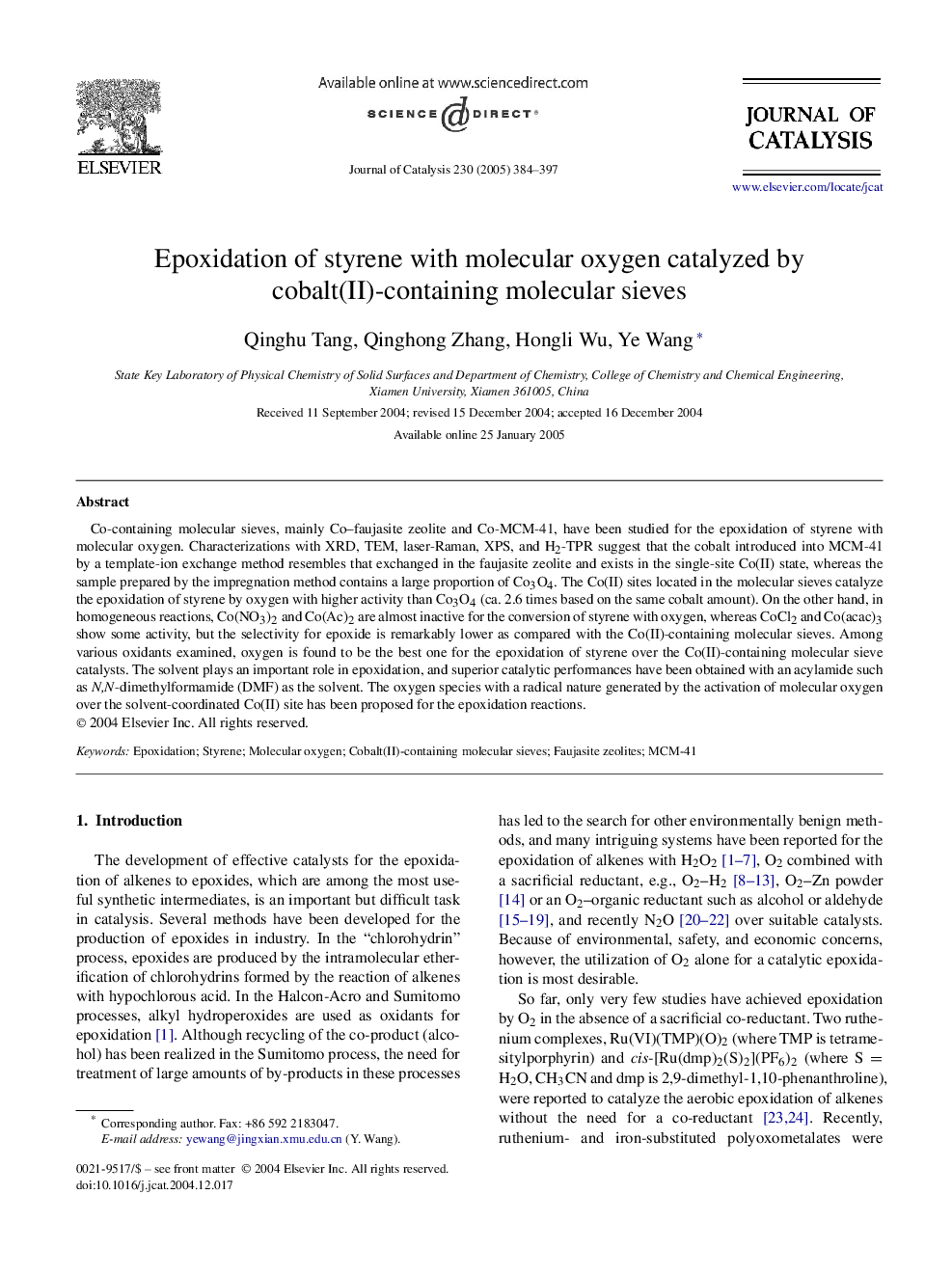| Article ID | Journal | Published Year | Pages | File Type |
|---|---|---|---|---|
| 9614226 | Journal of Catalysis | 2005 | 14 Pages |
Abstract
Co-containing molecular sieves, mainly Co-faujasite zeolite and Co-MCM-41, have been studied for the epoxidation of styrene with molecular oxygen. Characterizations with XRD, TEM, laser-Raman, XPS, and H2-TPR suggest that the cobalt introduced into MCM-41 by a template-ion exchange method resembles that exchanged in the faujasite zeolite and exists in the single-site Co(II) state, whereas the sample prepared by the impregnation method contains a large proportion of Co3O4. The Co(II) sites located in the molecular sieves catalyze the epoxidation of styrene by oxygen with higher activity than Co3O4 (ca. 2.6 times based on the same cobalt amount). On the other hand, in homogeneous reactions, Co(NO3)2 and Co(Ac)2 are almost inactive for the conversion of styrene with oxygen, whereas CoCl2 and Co(acac)3 show some activity, but the selectivity for epoxide is remarkably lower as compared with the Co(II)-containing molecular sieves. Among various oxidants examined, oxygen is found to be the best one for the epoxidation of styrene over the Co(II)-containing molecular sieve catalysts. The solvent plays an important role in epoxidation, and superior catalytic performances have been obtained with an acylamide such as N,N-dimethylformamide (DMF) as the solvent. The oxygen species with a radical nature generated by the activation of molecular oxygen over the solvent-coordinated Co(II) site has been proposed for the epoxidation reactions.
Related Topics
Physical Sciences and Engineering
Chemical Engineering
Catalysis
Authors
Qinghu Tang, Qinghong Zhang, Hongli Wu, Ye Wang,
